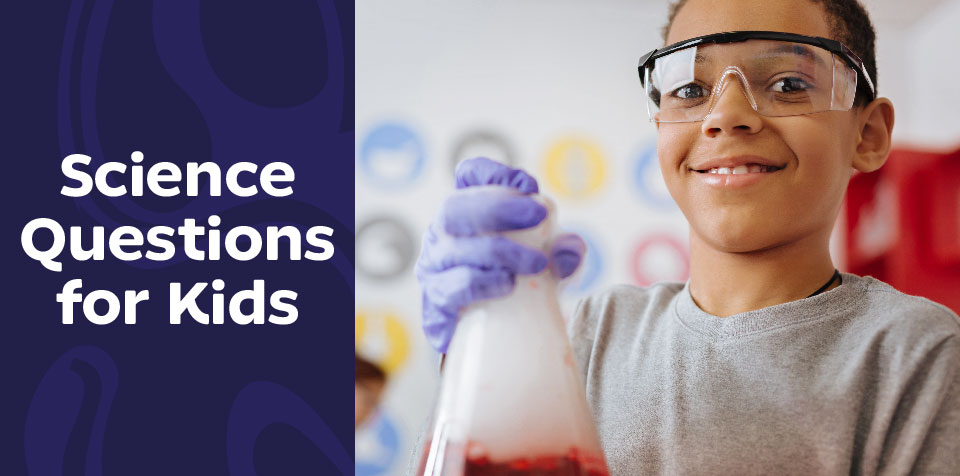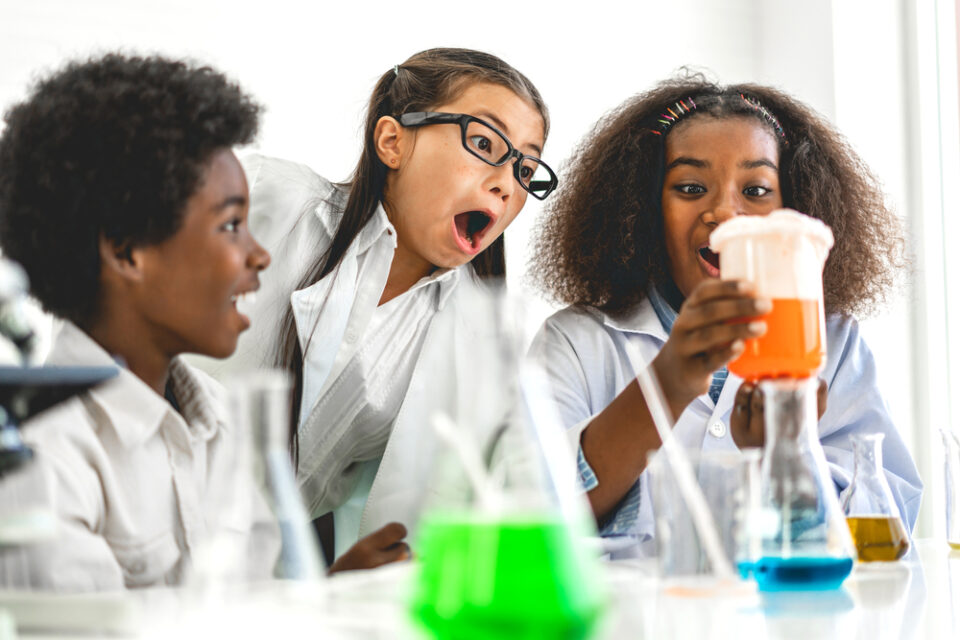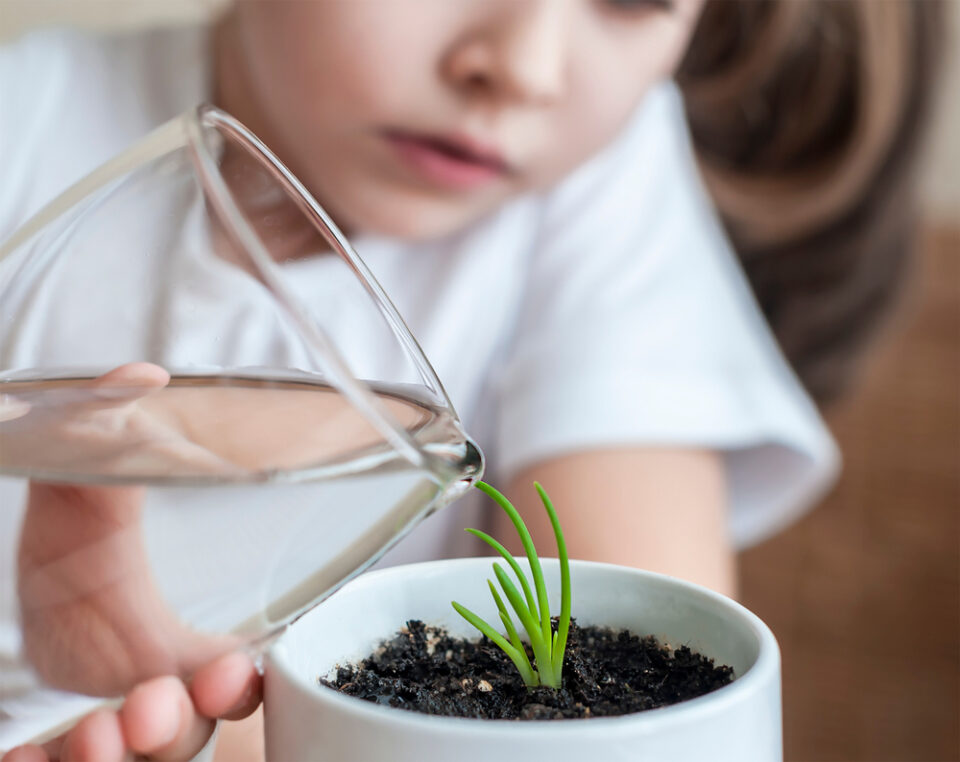
Learn as a Family with These Science Trivia Questions
From the moment children first open their eyes, they’re eager to learn about the world around them. As they grow older, that natural curiosity transforms into a powerful three-letter question: “Why?”
Why is the sky blue? Why does salt melt the snow? Why do airplanes fly, but people can’t? Questions like these are the cornerstones of learning. They inspire future scientists to make amazing discoveries and encourage kids to explore with wide-eyed wonder.
Satisfy your children’s quest for knowledge with these nine science questions for kids. This fun collection of trivia will answer some of their burning queries and help inspire an even greater love of learning!
The 3 Main Branches of Natural Science
Scientists try to understand the natural world through rigorous study of things that can be measured objectively—but there’s a lot to learn about! There are many scientific fields of study, and a lot of them fall into one of the three main branches of natural science: physical science, Earth science, and life science.
Physical Science
Physical science is the science of nonliving things. It covers many topics, from small chemical reactions to massive stars trillions of miles away. Branches of physical science include:
- Physics: The study of matter and the forces that act on it (like gravity).
- Chemistry: The study of substances and the changes they can undergo.
- Astronomy: The study of everything outside our atmosphere, including stars, planets, and asteroids.
Earth Science
Earth science studies the planet’s structure, properties, and processes. It helps us learn more about Earth, from its inner core to the edge of its atmosphere. There are several fields within Earth science, including:
- Meteorology: The study of the atmosphere and how it affects life on Earth (such as weather and climate change).
- Geology: The study of Earth, what it’s made of, and its natural phenomena (such as landslides, earthquakes, and floods).
- Paleontology: The study of Earth’s past, using fossils and artifacts to analyze the planet’s history.
Life Science
Life science focuses on living organisms and life processes. This branch of science helps us understand everything from how a virus spreads to how plants grow in the wild. Areas of life science include:
- Marine Biology: The study of oceans and other saltwater environments.
- Pharmacology: The study of chemical agents (like medicine) and the ways they affect living beings.
- Virology: The study of viruses and how they affect the human body, animals, and other life.

9 Fascinating Science Trivia Questions for Kids
Each branch of natural science is fascinating in its own way, and they all make excellent topics for a kids’ science trivia game. Gather your young scientists and help them build their knowledge with these nine questions sure to tickle their passion for learning.
Earth Science Questions
Question: Why is the sky blue?
Answer: Visible light may appear white, but it’s actually made up of all the colors of the rainbow, which combine to create white light. Light travels through the universe in waves, and each color travels at a different wavelength. Think of waves in the ocean: some are bigger than others and some are farther apart. The farther apart, the longer the wavelength. Red light has the longest wavelength, while blue has the shortest.
When light from the Sun travels through Earth’s atmosphere, it reflects off the different gases and particles in the air. These tiny molecules scatter blue light across the sky on its way to our eyes because blue light travels in shorter, smaller waves than the other colors. This scattering process makes the sky appear blue most of the time!
Sunrises and sunsets cause the sky to change color because the sunlight travels through more of the atmosphere when the Sun is low on the horizon. This causes blue light to scatter so much that our eyes can no longer see it, allowing red, orange, and yellow light to take the stage.
Question: How are rainbows made?
Answer: Rainbows form when light passes through water droplets. When light (like rays from the Sun) passes through droplets in the air, the light changes direction inside the water. A process called “dispersion” separates the white light into the seven colors of the rainbow (red, orange, yellow, green, blue, indigo, and violet). The separated wavelengths of light bounce off the back of the droplet, reflecting them toward our eyes and creating a rainbow.
Question: How do seeds travel?
Answer: Plants can’t walk around and find new places for their seeds to grow, so they have to rely on other types of travel—this is called “seed dispersal.” Most plants spread their seeds using wind, water, gravity, animals, or ballistic movement (an explosive ejection that sends the seeds flying far away from the original plant). Other plants use fire, like certain species of pine trees that require the heat from flames to release their seeds. Some seeds even stick to the fur of animals (or the clothing or shoes of passing humans), traveling for miles before falling off.

Physical Science Questions
Question: Why does mixing baking soda and vinegar cause fizzing?
Answer: Baking soda and vinegar fizz because of two chemical reactions: an acid-base reaction and a decomposition reaction. Baking soda is a base called sodium bicarbonate, and vinegar is composed of water and an acid called acetic acid. When you mix baking soda and vinegar together, the acid-base reaction creates two new substances called sodium acetate and carbonic acid.,
Almost immediately after the initial reaction, the carbonic acid breaks down to create water and carbon dioxide gas. The release of this gas causes bubbles and fizzing.
Question: Why does salt melt snow?
Answer: On cold winter days, trucks spread salt on the roads and sidewalks to prevent slipping. This is because the salt melts the ice, making it safer to travel.
Snow and ice are made of frozen water. When water freezes, the molecules create a rigid structure that holds its shape, transforming from a liquid to a solid.
Salt is a solute, meaning it dissolves in water. If someone throws salt onto snow or ice, it will begin to dissolve and mix with the water, disrupting the frozen structures and loosening their bonds. This disruption lowers the freezing point of water (32°F or 0°C) and melts the ice.
Question: How do airplanes fly?
Answer: Airplanes fly using the four forces of flight: thrust, lift, weight, and drag. Thrust from the propeller or engine moves an airplane forward through the sky. Air traveling over the wings creates a change in pressure: The air pressure above the wings decreases, but the pressure below them increases, creating an upward force on the plane called lift. Weight is the force of gravity on the plane, and drag is friction from the air moving against the plane. Both work against lift and thrust to affect the plane’s direction. If there’s more thrust and lift than weight and drag, the plane will fly upward. If there’s more weight and drag than thrust and lift, the plane will descend. When there’s a balance between all four forces, the plane will maintain its altitude.

Life Science Questions
Question: What is photosynthesis?
Answer: Most plants don’t eat food the way humans and animals do, but they still need their own kind of food for energy. Plants get this food through a process called photosynthesis, which uses sunlight to convert carbon dioxide and water into nutrients.
During this process, plants absorb carbon dioxide from the air, drink up water from the soil, and trap solar energy with their leaves. They use this energy to convert the water and carbon dioxide into a sugar called glucose, which feeds the plant and helps it live and grow. As a byproduct, plants also produce oxygen during photosynthesis, which they release back into the air.
Question: What is cellular respiration?
Answer: Cellular respiration is the opposite of photosynthesis. While plants use photosynthesis to convert solar energy, carbon dioxide, and water into glucose and oxygen, all living things (including plants) use respiration to convert oxygen and glucose into energy, releasing carbon dioxide and water as byproducts.
Humans use sugars from the foods we eat and oxygen from the air we breathe to perform respiration in our cells, giving us the energy we need to grow and power through each day!
Question: How far away is the Sun?
Answer: The Sun is about 93 million miles (150 million kilometers) from Earth. However, Earth has an elliptical (or oval-shaped) orbit, which means that our distance from the Sun changes as our planet travels through space. Earth is about 91 million miles (147 million kilometers) away from the Sun during “perihelion,” the point in orbit when Earth is closest to the Sun (which occurs in January). On the other hand, our planet is more than 94 million miles (153 million kilometers) away during “aphelion,” the point when Earth and the Sun are farthest apart (which occurs in July).

Perform Scientific Experiments at Home
There are many ways to study science at home. After your children work their way through this trivia, you can demonstrate static electricity with water and a balloon, tour the neighborhood to study natural processes, or fuel their scientific interest with a subscription box from Little Passports. We offer four boxes for budding young scientists:
- Animals Wild: This subscription encourages kids ages 3–5 to explore the animal kingdom. Each monthly box contains playsets, games, and fun facts about animals from the treetops of the Amazon rainforest to the depths of the ocean.
- Science Junior: Designed to introduce easy science experiments for kids ages 5–8, this monthly subscription will delight your children with hands-on activities about robots, volcanoes, optical illusions, and more.
- Science Expeditions: Explore science topics for kids 8 and up, including aerodynamics, forensics, and simple machines. This monthly subscription box delivers experiments and inventions right to your door.
Give your kids the gift of knowledge and order a Little Passports science subscription box today!
